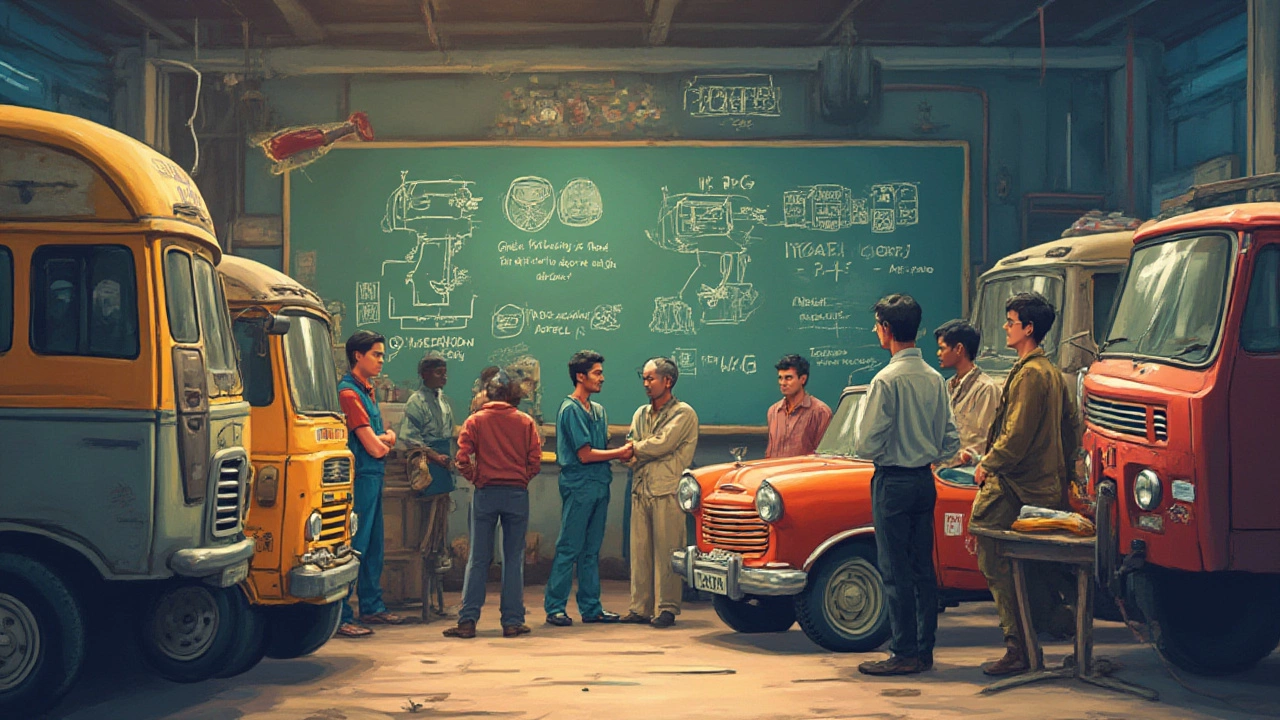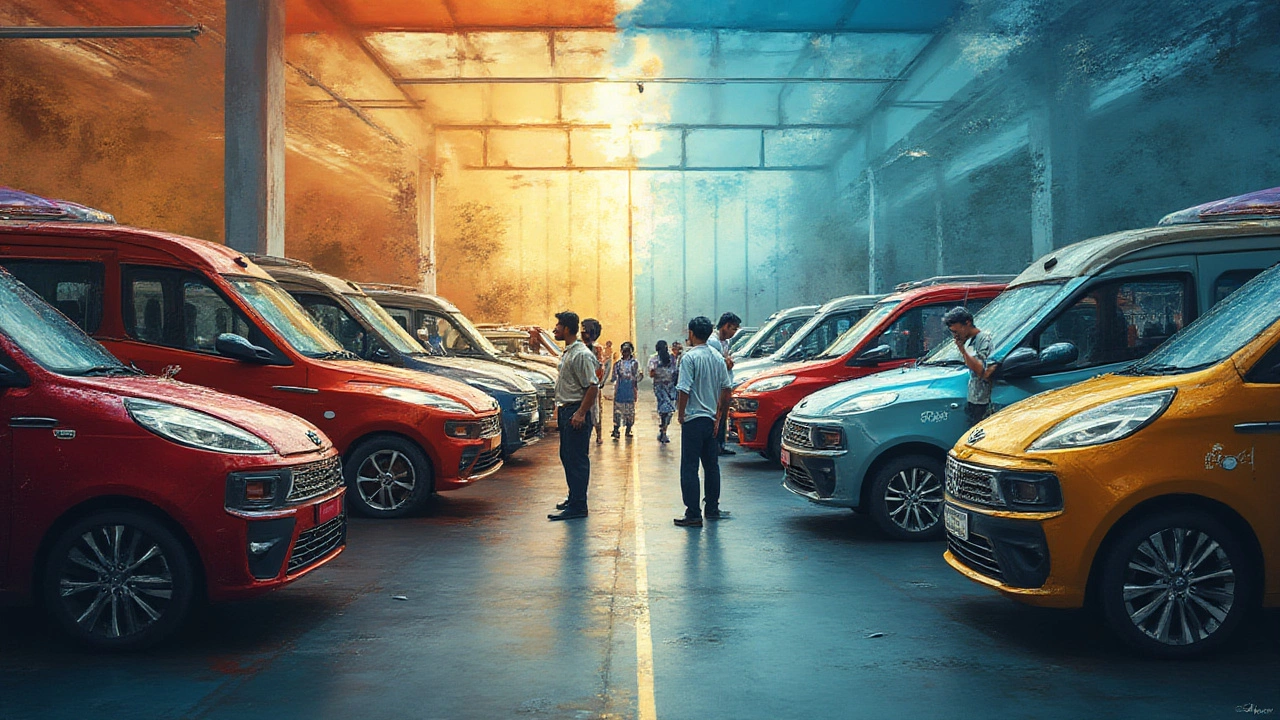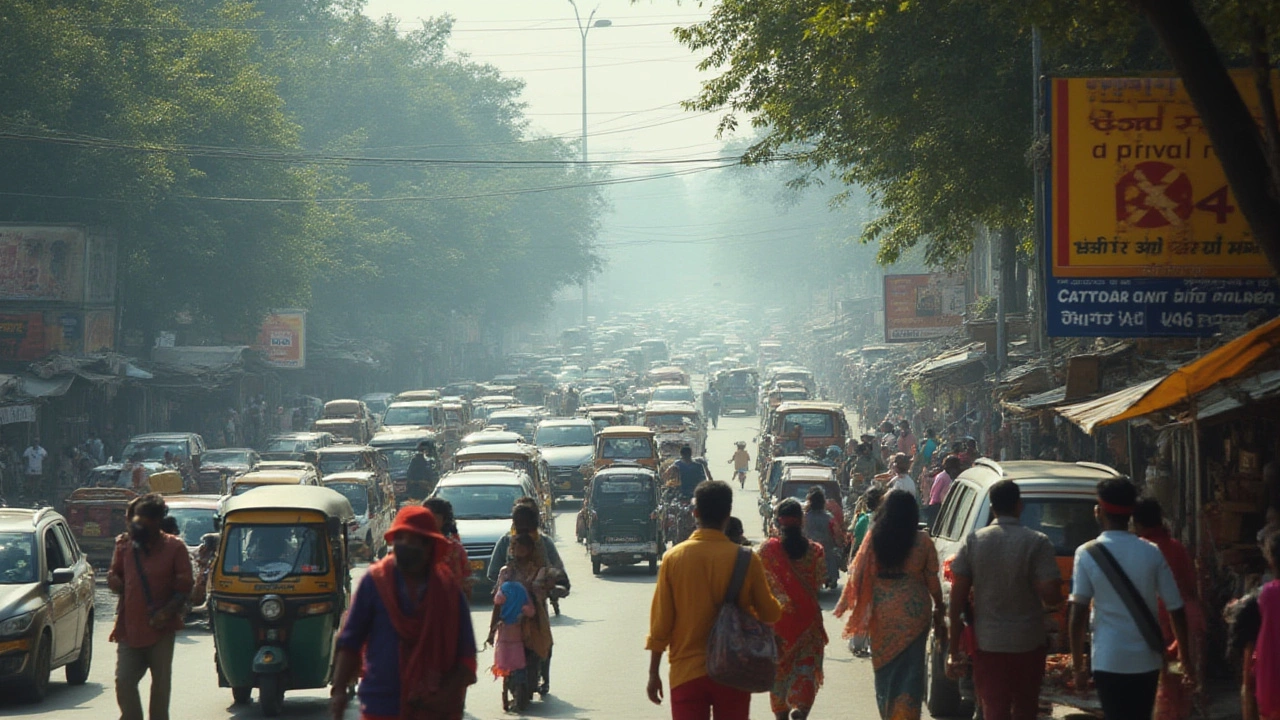If you tried registering a brand new diesel car in Delhi around April 2020, you’d have been met with the digital equivalent of a brick wall. Suddenly, dealerships were scrambling, old models got big discounts, and buyers felt the ground shift beneath their feet. All of this wasn’t just a bureaucratic hiccup – India pulled the plug on a whole generation of engines, making some vehicles illegal to sell or register practically overnight. But this wasn’t just about cleaning the air; it was about pushing an entire nation toward a radically stricter future.
What Actually Got Banned? The End of BS4 Diesel and Petrol Engines
The phrase “engine banned in India” is a bit of a headline grabber, but here’s what really happened: In April 2020, India officially stopped the sales and registration of all BS4 diesel engines and BS4 petrol engines for new vehicles. BS4 stands for “Bharat Stage 4,” a type of engine emission norm that had been running the show since 2010. The government didn’t stop with diesel cars – no BS4 petrol cars, bikes, buses, or trucks could be sold after March 2020 if they hadn’t already been registered. If you’d already bought one before the deadline, you got to keep it, but new registrations? Not happening.
So what made this so dramatic? Well, Bharat Stage norms are India’s version of the European emission standards (Euro IV, Euro VI, etc.). They dictate just how much pollution – mainly nitrogen oxides (NOx), particulate matter (tiny sooty bits), hydrocarbons, and carbon monoxide – a vehicle can legally spew into the air. The BS4 standards had been the law of the land since 2010, but Indian cities got so choked with smog by the mid-2010s that the Supreme Court literally stepped in. Instead of moving slowly – usually, the government rolls out new standards in phases – they did something almost unheard of: they skipped BS5 entirely and jumped straight to BS6. For context, that’s like skipping iPhone 11 and going right from the X to 12 overnight.
What does BS6 demand? Here’s a snapshot, if you like tables:
| Norm | NOx Emission (g/km) | Particulate Matter (mg/km) | CO Emission (g/km) |
|---|---|---|---|
| BS4 - Petrol | 0.08 | — | 1.0 |
| BS4 - Diesel | 0.25 | 0.025 | 0.50 |
| BS6 - Petrol | 0.06 | 0.0045 | 1.0 |
| BS6 - Diesel | 0.08 | 0.0045 | 0.50 |
Those are some sharp cuts – diesel NOx drops by two-thirds, and particulate matter by more than five times compared to BS4. Even for petrol engines, the reduction is significant. Manufacturers had to spend millions (sometimes billions) updating or scrapping engines, retrofitting plants, and finding new suppliers. Some diesel engines, especially the small economical kind, vanished from the market because it just wasn’t worth upgrading them – they simply got banned by default.
There were exceptions: older vehicles already registered before the cutoff got a grace period, but no new BS4 car or motorcycle could legally get on the road. Some rural or special-use vehicles (like farm tractors) had slightly different rules, but if you’re talking regular passenger or commercial vehicles, BS4 was history overnight. My mate in Mumbai actually bought a BS4 diesel SUV at a huge discount in March 2020, but the dealership warned him he had just five days to get it registered before the window slammed shut. Talk about last-minute stress.

Why Did India Go For This Ban? Numbers, Pollution, and the Supreme Court Effect
Let’s cut through the government speak for a second. People living in Delhi or cities like Gurugram, Lucknow, and Kolkata aren’t strangers to pollution. Schools are shut during “smog season,” and when my wife Aisha and I last visited New Delhi to see family, just stepping outside felt like breathing through a dustbin. The numbers are jaw-dropping: In January 2024, the World Air Quality Index had Delhi among the world’s top five most polluted capitals, with PM2.5 levels sometimes exceeding 800 µg/m³ (the healthy limit is 35 according to the World Health Organization).
Here’s where engines come in: Diesel vehicles, in particular, produce a lot of particulate matter and NOx, which turn into ground-level ozone and those infamous toxic winter smogs. Several studies found that vehicles were responsible for up to 30% of dangerous airborne particulates in major Indian cities – with older diesels being particularly nasty. The Supreme Court couldn’t ignore the headlines anymore and ordered the government to jump to BS6 by 2020, skipping BS5 entirely. It was a legal and environmental sledgehammer meant to shock the system into action.
The other kicker: Indian oil companies had to shift to low-sulfur fuels (just 10 parts-per-million, down from 50 in BS4). That wasn’t just a chemical tweak – refineries had to retool, retrain, and even import new technologies. The total investment across the auto and fuel industries was around $13 billion, according to India’s oil ministry. And manufacturers? They raced against time. Brands like Maruti Suzuki, Hyundai, Tata, and even luxury players like Mercedes-Benz either phased out inefficient engines or rushed to update their entire lineup. Some cars never made the leap – for example, the famous popular Maruti Suzuki diesel hatchbacks like the Swift diesel disappeared from showrooms, and entry-level diesels became rare overnight.
If you’re in the automotive trade, this is huge: India is the world’s fourth-largest car market, and an overnight rule change like this doesn’t just shuffle the deck – it changes the whole game. A few clever dealers managed to unload their last BS4 stock at fire-sale prices, but many had to scrap unsold cars, taking massive financial hits.

Impact on Drivers, Manufacturers, and Everyday Life: Navigating the BS6 Future
If you’re a driver, here’s what the engine ban really means: Older BS4 and even ancient BS3 vehicles aren’t illegal to drive (yet), but they’re going to feel the pinch as more cities introduce bans or “green zones.” Delhi has already banned diesel cars over 10 years old and petrol cars over 15 years. Some states are talking about scrapping incentives or introducing fees for polluting vehicles, so holding on to that smoky old diesel is going to cost, sooner or later. Modern BS6 vehicles, meanwhile, need the right fuel. Filling up with normal diesel can damage the fancy emission-control tech like SCR (Selective Catalytic Reduction) and DPF (Diesel Particulate Filter) – so don’t try using rural fuel in a new BS6 car if you want your warranty to last.
On the business side, manufacturers had a rough ride. Companies had to redesign engines, add high-tech emission filters, and completely overhaul their supply chains. According to the Society of Indian Automobile Manufacturers (SIAM), over 700 models and variants needed upgrades within two years. The result? Prices for new cars jumped, especially for diesels, which lost their budget-friendly tag. Taxi businesses, truck operators, and even city bus fleets faced higher costs but had to adapt fast or risk being left behind. Yet, the benefits? Cleaner air, fewer soot clouds, and lower health costs for urban families. Recent data from the Central Pollution Control Board (CPCB) shows a 15-20% year-on-year reduction in particulate pollutants in Delhi and Mumbai since mid-2021, thanks in part to newer engines and cleaner fuel.
If you’re thinking about running a business in the auto sector, the big tip is: always keep an eye on environmental policy. India’s pattern is dramatic, but not random. Next on the horizon? Real Driving Emission (RDE) tests, which measure pollution in actual urban chaos, not just in labs. Plus, there’s a big push for CNG, electric vehicles, and hybrids, with heavy incentives for buses running on cleaner fuels. Even if you’re just a buyer, make sure the engine in your next car not only meets current standards but can survive future rule changes. Ask to see the ‘BS6’ badge and check the car’s papers for compliance – sellers sometimes try to offload leftover stock in rural areas with patchy enforcement.
- BS4 diesel and petrol engine ban started from April 1, 2020, with no new vehicle registrations allowed.
- BS6 engines require ultra-clean fuel – check your nearest petrol and diesel pumps for proper signage.
- If you’re selling or buying used vehicles, check local RTO (Regional Transport Office) rules – cities might restrict older models sooner than you think.
- For businesses, explore CNG, hybrid, or even battery-electric options for future fleets; incentive policies are changing fast.
- Watch out for more ‘green zone’ traffic rules in major metros – driving an old diesel might get you a fine, or even an instant ban.
This moment marks a rare point when an entire country flipped a switch, redefined pollution rules, and forced the engine industry to leapfrog years of gradual evolution. For most folks, it means better air and tougher choices on what to buy or drive. If you’re in the auto or manufacturing sector, keeping pace with the latest emission standards isn’t just smart – it’s survival. Things have never been dull since BS4 engines got the boot.

